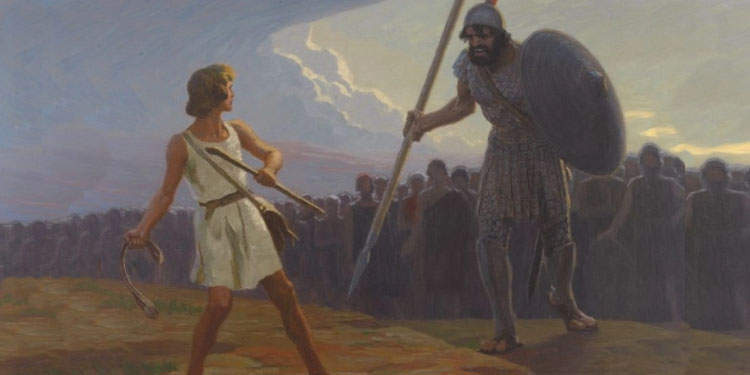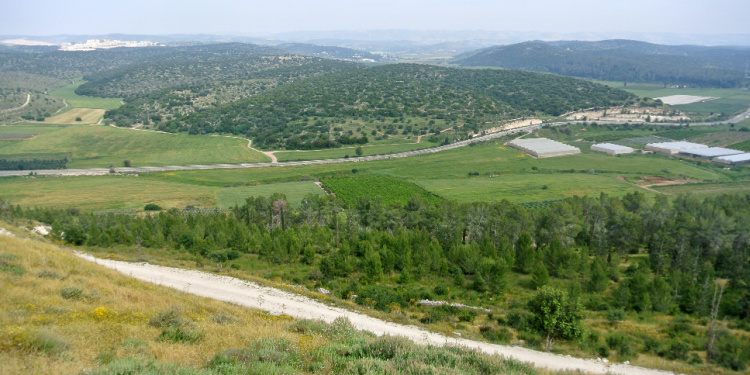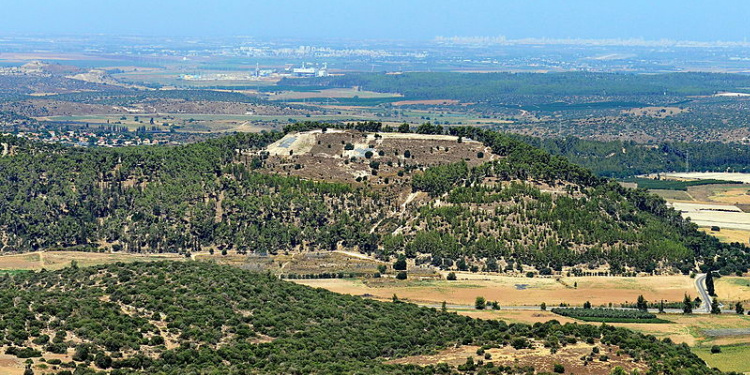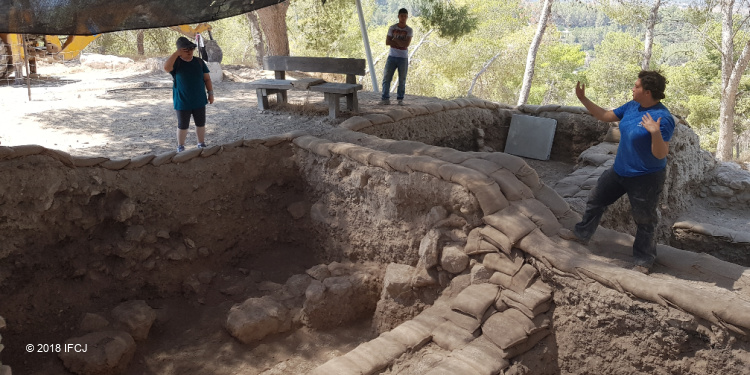Where David Fought Goliath
Stand for Israel | January 27, 2021

David and Goliath
Now the Philistines gathered their forces for war and assembled at Sokoh in Judah. They pitched camp at Ephes Dammim, between Sokoh and Azekah. Saul and the Israelites assembled and camped in the Valley of Elah and drew up their battle line to meet the Philistines. The Philistines occupied one hill and the Israelites another, with the valley between them. (1 Samuel 17:1-3)
The rest of 1 Samuel 17 tells one of the most beloved Bible stories, one we often learn even before we can read, the story of how God helped his servant, a young shepherd named David, defeat the fearsome giant and champion of the enemy Philistines, Goliath. But the details above feature in this week’s Holy Land Digs.
In the Valley of Elah

Above we see the “Valley of Elah,” as mentioned in the Bible, from the top of Tel Azekah. In Hebrew, “tel” means mound, and today Tel Azekah provides archaeological and historical links straight back to the Bible.
Yes, the valley you see above is the very ground on which the Philistines massed, the very ground on which the Israelites cowered at the sight of Goliath, and the very ground on which young David proved victorious. The Bible comes to life when we see its locations with our own eyes, in living color.
A Site Throughout Scripture

The photograph above shows Tel Azekah, itself, in living color. And Tel Azekah did not just appear in the story of David and Goliath.
In the Joshua 10, we hear two separate stories of how God defeated Israel’s enemies on this holy ground. First, Joshua and the Israelites defeated the Amorites in battle (with God’s help, of course). Then, the Bible tells us God sent a natural disaster: “The LORD hurled large hailstones down on them, and more of them died from the hail than were killed by the swords of the Israelites” (v. 11).
Then, when King Nebuchadnezzar and the Babylonians overran Israel, the Israelites of Azekah held out longer than others before being taken over by Babylon, as Jeremiah identifies it as just one of two “fortified cities left in Judah” (34:7). And when Israel at last returned to the Holy Land after the Babylonian exile, Nehemiah tells us that the Israelites returned to “Azekah and its settlements” (11:30).
Tel Azekah Today
Archaeologists continue to sift through the ruins of Azekah, finding evidence of life in biblical days. In the photo below, we see The Fellowship’s Tourism Manager Abe Truitt showing one such archaeological dig at Azekah to a tour group of Fellowship friends visiting in 2018.

